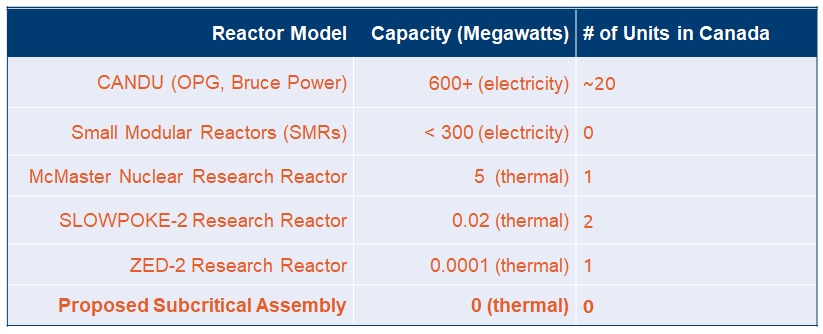What is a Subcritical Assembly?
A subcritical assembly is a type of nuclear reactor, but on the opposite end of the spectrum from a larger reactor, such as the current ones used by Ontario Power Generation (OPG) or Bruce Power.
The proposed subcritical assembly will be the only facility of its kind in Canada.
A subcritical assembly is based on the same principles of nuclear science as larger reactors, but vastly different in its operation in that it cannot generate power or electricity. The table shows how the subcritical assembly compares to other reactors in Canada.
The subcritical assembly has many distinct design characteristics that makes it very conducive for research, training, and teaching purposes; and is why it is often called a “teaching reactor.”
In Canada it is referred to as a subcritical assembly and that it is what the Canadian Nuclear Safety Commission, our regulatory body, refers to it as. It is acknowledged that other areas of the world also refer to it as a subcritical reactor.

